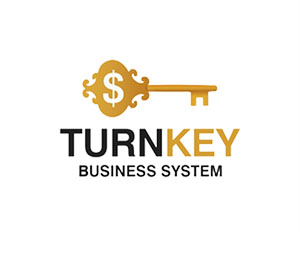Green Forex: How ESG Currencies Deliver Double Returns

Green Forex: How ESG Currencies Deliver Double Returns
Green Forex refers to the growing demand for currencies of environmentally responsible economies—primarily NOK, SEK, CAD and NZD—driven by ESG capital inflows, commodity transitions and stable policy frameworks.
This article explains how these currencies gained traction in 2025, why ESG funds increasingly allocate capital into “clean” FX assets, and how traders can systematically capitalize on this trend.
This article explains how these currencies gained traction in 2025, why ESG funds increasingly allocate capital into “clean” FX assets, and how traders can systematically capitalize on this trend.
New Forces Behind Currency Performance: Definition & Context
The idea of “green” currencies emerged as global funds began integrating environmental metrics into portfolio allocation. Instead of evaluating currencies solely by interest rate differentials or macro cycles, investors now consider sustainability, energy mix, and long-term transition potential.Norway's hydropower base, Sweden's low-carbon manufacturing, Canada's transition away from carbon-intensive extraction, and New Zealand's renewable agriculture make their currencies increasingly attractive for ESG-mandated portfolios.
In the EU, sustainable finance rules accelerated this shift. According to the European Central Bank (EU, Sept 2025), more than one-third of institutional portfolios now include “ESG-aligned FX exposure” as a category. In the USA, asset managers report similar demand, particularly within global macro funds. This structural change reshapes the FX market landscape.

Green Forex: How ESG Currencies Deliver Double Returns
Why Green Currencies Outperform in 2025
The outperformance of NOK, SEK, CAD and NZD in 2025 is not random. Several drivers strengthened the trend:ESG capital flows. Large global funds increasingly treat currencies as an ESG expression. When capital moves into markets aligned with sustainability, demand for the corresponding FX pairs rises.
Commodity transition. Norway and Canada benefit from rising demand for transition metals (nickel, copper), while New Zealand's export sector aligns with low-emission standards.
Policy stability. Central banks in Scandinavia and New Zealand maintain transparent frameworks: Norges Bank (Norway) and Riksbank (Sweden) regularly publish climate risk disclosures, supporting market confidence.
Energy independence. Hydropower and renewables reduce geopolitical risk exposure—an important factor for long-term FX investors in the US, EU and Asia-Pacific.
This combination creates a multi-factor premium, making these currencies attractive both fundamentally and from a flows perspective.
Practical Strategies for Traders
Green Forex does not require guessing ESG flows. Traders can approach the trend methodically:Trade relative strength. For example, NOK/EUR or SEK/USD often show momentum when markets shift capital toward lower-emission economies.
Use commodity correlation models. CAD and NZD react strongly to dairy, lumber, and metals indices. Traders can monitor correlations (TradingEconomics, Sept–Oct 2025) for confirmation signals.
Track central-bank climate reports. Norges Bank, Riksbank, BoC and RBNZ publish climate-related risk metrics (dates vary monthly). These updates often influence intraday volatility.
Watch US and EU fund positioning. Flows into sustainability-focused ETFs and bond funds frequently precede FX moves by 1–2 weeks.
Experienced traders also combine traditional macro indicators—rates, inflation, terms of trade—with ESG-related data to form a more complete model.
Case: How ESG Flow Lifted NOK in Early Autumn 2025
A useful example comes from the NOK rally in early autumn 2025.A Scandinavian pension consortium increased its renewable-sector allocation (EU, Sept 2025). Although the fund did not disclose exact currency volumes, market depth on TradingView showed stronger NOK demand during the same week.
The result:
EUR/NOK volatility index: 7.9 (Sept 2025, ECB)
USD/NOK intraday spikes intensified during European morning sessions
Norges Bank liquidity bulletins highlighted increased foreign participation
This illustrates how sustainability-related investment decisions spill into the FX market even without direct currency announcements.
Analytical Outlook: What to Expect in 2026–2027
Several structural forces indicate continuation of the trend:ESG mandates grow annually , especially in the EU and USA, expanding the pool of capital that treats FX as part of sustainability exposure.
Commodity transitions support CAD and NOK , as metals used for batteries and renewable infrastructure remain in demand across Asia and North America.
Low-emission economies attract long-term FX positioning. Sweden and New Zealand maintain strong reputational advantages.
Lower geopolitical risk premiums increase the probability of stable inflows.
Based on current macro conditions (as of Oct 2025), analysts expect moderate appreciation bias for NOK, SEK and NZD relative to EUR and USD, with CAD likely to benefit during commodity upcycles.
For traders in the US, EU or Asia, Green Forex offers exposure to structural themes rather than short-term speculation—important for long-horizon strategies.
Conclusion
Green Forex is becoming a long-term structural segment of the FX market. ESG capital allocation, low-carbon economic profiles and stable policy frameworks give NOK, SEK, CAD and NZD a double advantage: fundamental strength and flow-driven demand. Traders who incorporate sustainability factors into their analysis gain access to a growing trend with global relevance.
Written by Ethan Blake
Independent researcher, fintech consultant, and market analyst.
November 25, 2025
Join us. Our Telegram: @forexturnkey
All to the point, no ads. A channel that doesn't tire you out, but pumps you up.
Independent researcher, fintech consultant, and market analyst.
November 25, 2025
Join us. Our Telegram: @forexturnkey
All to the point, no ads. A channel that doesn't tire you out, but pumps you up.









Report
My comments